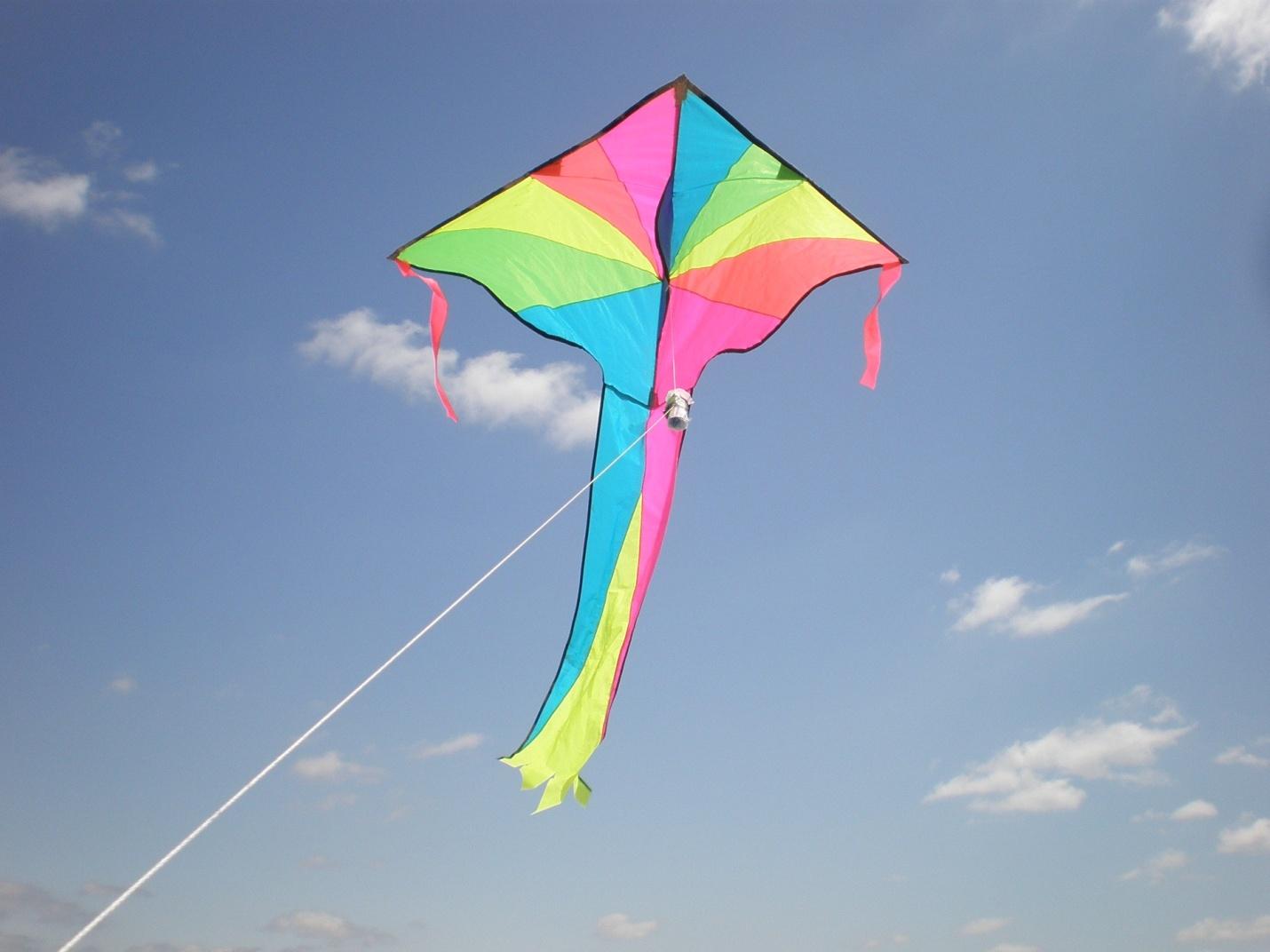
Introduction
One of the best things to do on a beautiful, windy day on the beach is to fly a kite. They can fly so high that sometimes their vibrant colors become nothing more than a tiny spot in the sky. But how can you accurately measure how high the kite is actually flying?
Objective
A B1100-2 barometric pressure data logger is used to determine the altitude of a flying kite.
Procedure
The setup for this procedure is pretty simple. We needed a kite with enough surface area to create the lift needed to overcome the weight of the B1100-1 USB Barometer. We used a 46" x 30" Nylon kite that had a wind range of 5-20 mph. A kite of this size would be able to lift the 43 gram USB Barometer into the air on a windy day. To avoid damaging the USB Barometer when the kite inevitably crashes into the sand or the Mississippi Sound, we placed it in a zipper storage bag. Then we duct taped the Barometer in the bag onto the string about 18 inches below the body of the kite. The B1100-1 USB Barometer was set at its default settings. The wind was blowing at a velocity of 23 km/h.
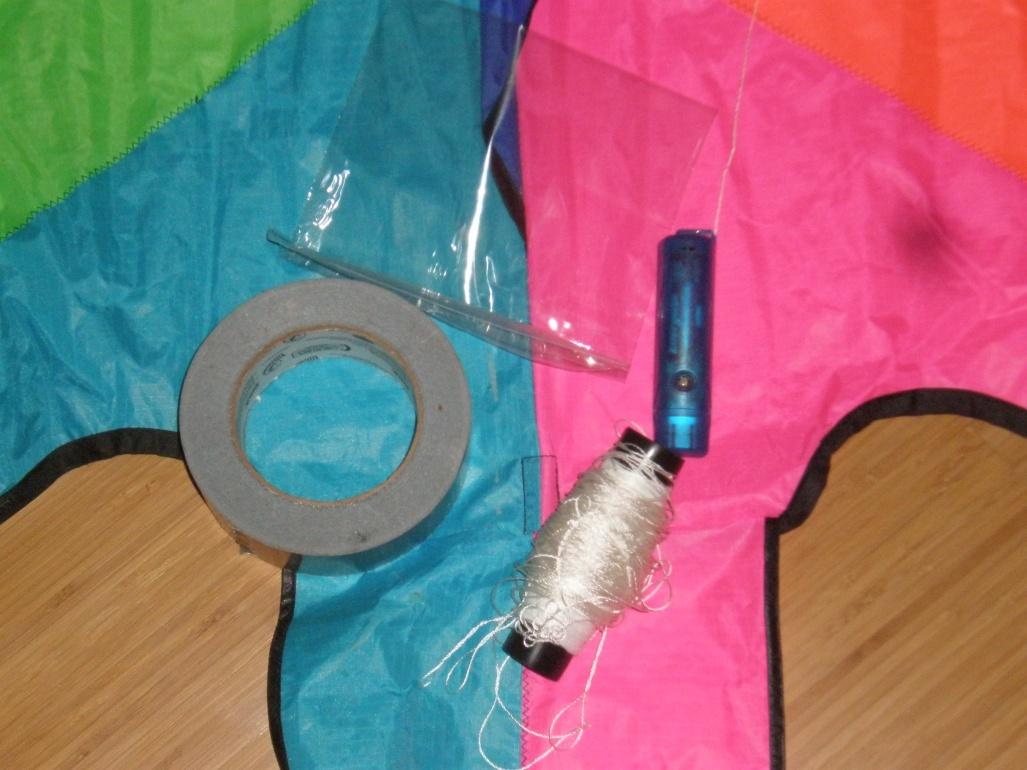
Materials for Experiment:
- 1 46" x 30" Ripstop Nylon Kite with string
- 1 USB Barometer B1100-1
- 1 Zipper Storage Bag
- Duct Tape (Is there anything you can't do with duct tape?
- Windy Day
deadband = 0
samplesPerFile = 3600
statusIndicators = normal
sampleRate = 1000 ;one sample every 1000ms
rebootOnDisconnect
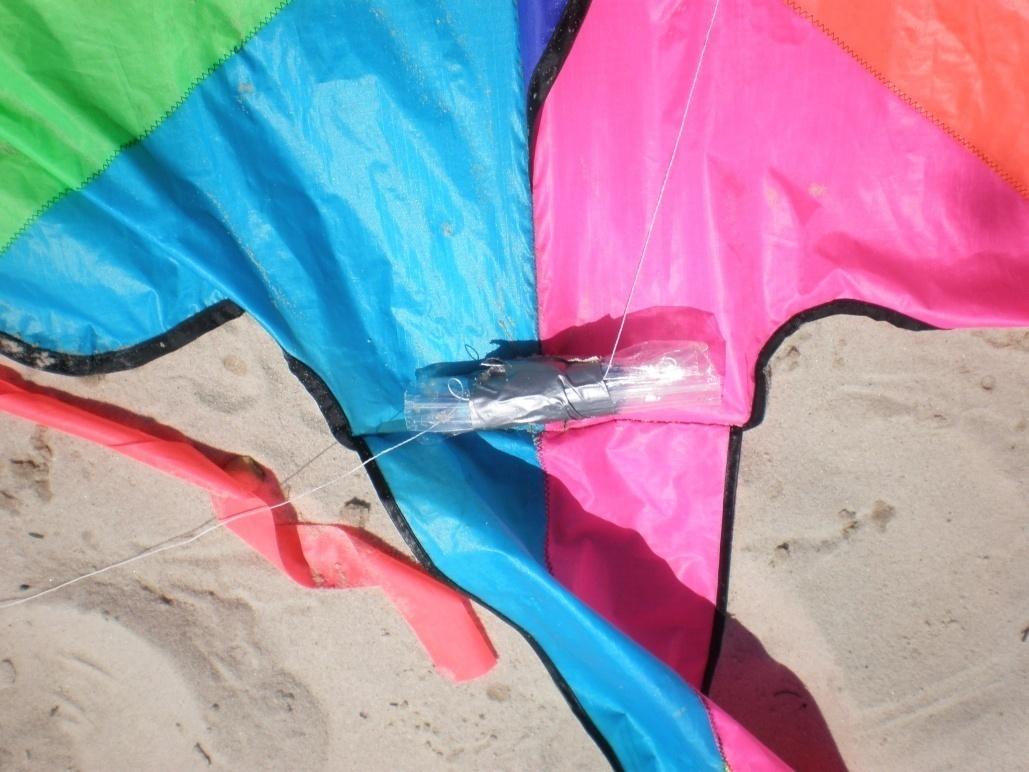
Results
Copying the data from the XLR8R program into Excel, we were able to make charts of both the pressure and altitude of the kite during its flight. The raw pressure data collected by the USB Barometer during one failed attempt to fly the kite (A on graph below) followed by a superior flight (B) looked like this:
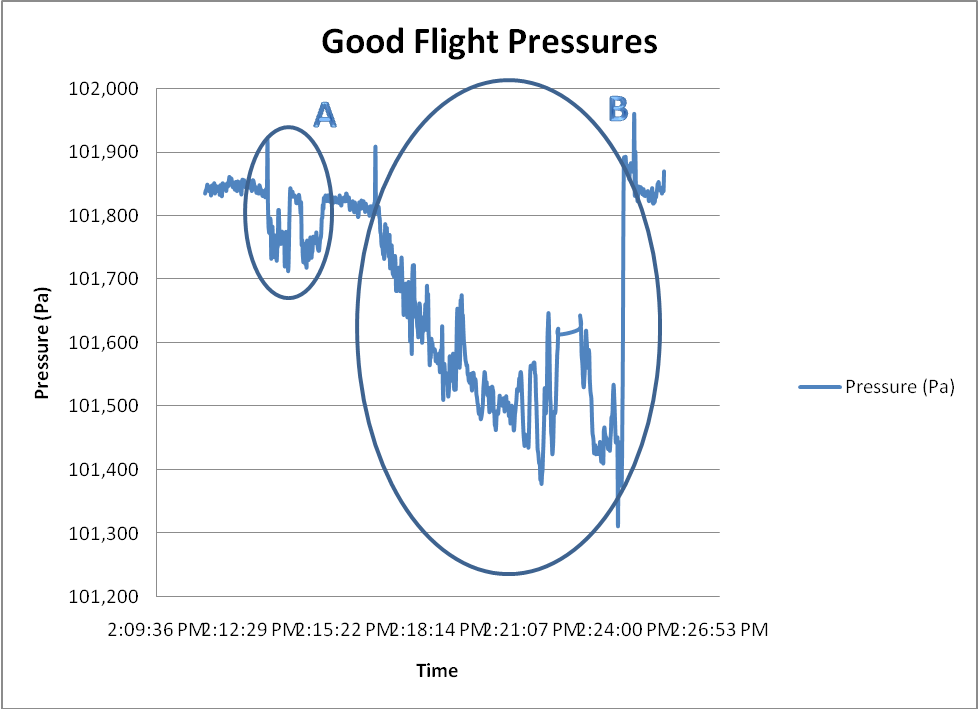
Barometric Pressure versus Time During Flight
To calculate the altitude of the kite, we used the formula for absolute altitude
where p0 equaled the pressure at sea level on the day of flight. p0= 101,830 Pa per weather.com.
The graph for the altitude of the kite is illustrated below with "A" noting the failed flight attempt and "B" noting the successful flight.:
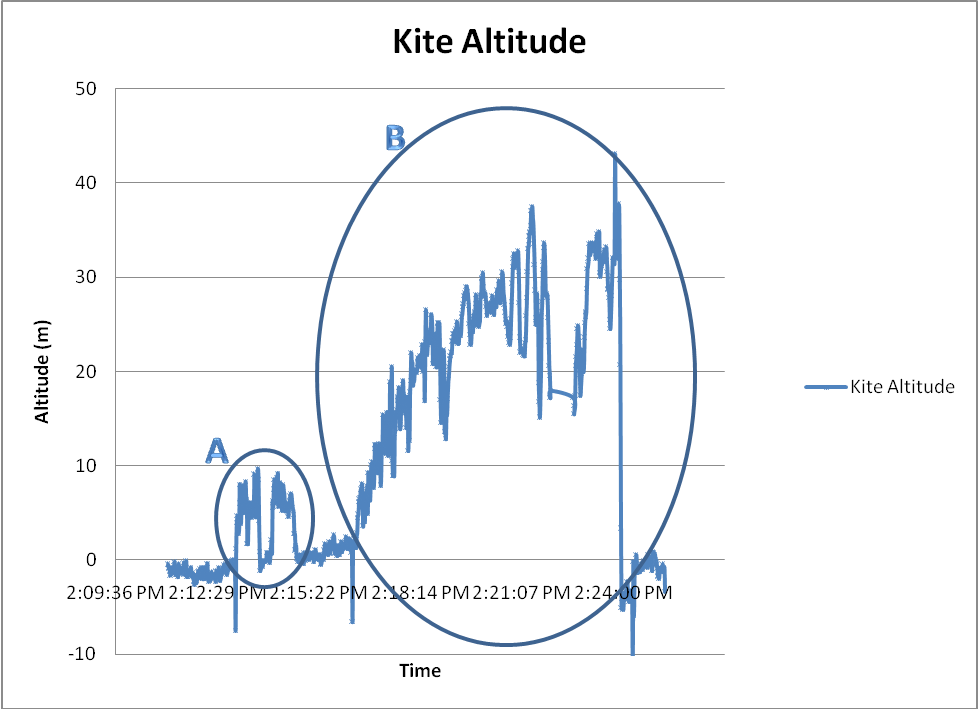
Altitude versus Time During Flight
Discussion
The USB Barometer was able to make very accurate readings. At the times when the kite was on the ground, the calculated altitude was within a close margin of error to exactly sea level, which was where the kite was being flown from. The given pressure by weather.com was 101,830 Pa, and the USB Barometer measured 101,84416 Pa as sea level. One can see the climb of the kite and when it started to dip down, only to be caught again by the wind and continue to climb.
Conclusion
The highest calculated altitude for our kite was about 40 m just before it crashed. The USB Barometer was able to create accurate data that was a great deal of fun to collect.